When it comes to summer flowering trees and large shrubs there is nothing to touch flowering dogwoods. There are few more breathtaking sights than a flowering dogwood in full bloom. Many, such as Cornus 'Porlock' and Cornus florida 'Cherokee Chief', make splendid flowering trees for small gardens.
I first fell in love with Cornus ‘Porlock’ in the Sir Harold Hillier Gardens, Hampshire. The way the blooms cascaded down the branches, the poise of the flowers, the way they fluttered in the breeze, how they gazed upwards, avoiding the eye, but teasing and tantalising. Its beauty was best admired by grasping a branch and holding it down to admire those creamy bracts, four of them arranged as a flattened star around each dark bobble of tiny flowers. In autumn, strawberry-like fruits weighed down the branches; hardly delicious, but edible and very tempting.
Cornus is a genus for all seasons. Aside from the flowering dogwoods, some cornus are grown for their colourful winter stems, and others for their attractive foliage.
How to grow flowering dogwood
Where to grow flowering dogwood
Flowering dogwoods are at their best with some light shade and shelter from deciduous trees; they thrive in open woodland settings.
They favour neutral to acid, reasonably moist, but well-drained fertile soil, with plenty of organic matter. However, they are more tolerant than generally thought and often succeed in alkaline conditions if mulched well with organic compost. I have grown dogwood successfully on poor sandy soil and in containers using loam-based compost.
How to plant flowering dogwood
Flowering dogwoods are best planted as young, container-grown plants from October to March. Young plants are not particularly attractive, giving little idea of the glorious plants they will become, which puts many off planting them.
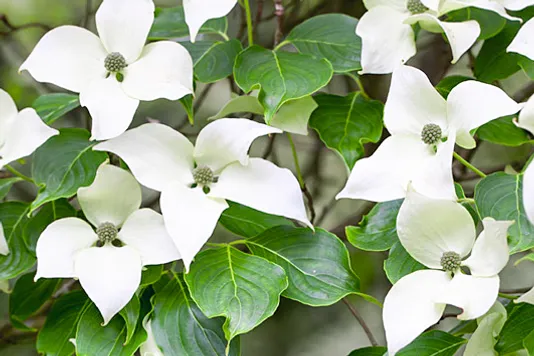
Flowering dogwood problems
Flowering dogwoods, especially Cornus florida, suffer from various fungal diseases, especially powdery mildew and anthracnose. These, along with the dogwood borer insect, have caused damage to and death of many trees in their natural habitat. The fungal diseases can be a problem in gardens but many new hybrids, such as the Cherokee and Celestial hybrids, are more resistant. Cornus florida and Cornus kousa both resent poor drainage, which causes root rot.
Types of flowering dogwoods
The cultivars of Cornus kousa are often collectively referred to as Chinese dogwoods, although many originate from Japan and Korea. Cornus kousa var. chinensis ‘China Girl’ is deservedly popular and has the advantage of large flower heads produced on young plants; some cultivars take a few years to bloom with any enthusiasm. Cornus kousa ‘Teutonia’ is another large, flowering form with immaculate flower heads of rich cream. I have shown this in recent years at the RHS Chelsea Flower Show and it has always proved to be a star of the show.
The North American dogwoods, cultivars of Cornus florida and Cornus nuttallii, are less popular because of their susceptibility to the fungal disease cornus anthracnose. A pity, as most mature to form wonderful, pagoda-like small trees with elegant branches and upturned twigs. In winter, flower buds are enclosed by the immature bracts on the bare branches, appearing like tiny finials at the end of every twig. As the blooms develop the bracts remain joined at the tips before they pop open.
The hybridisation of flowering dogwoods has led to the development of some spectacular flowering shrubs. Cornus Venus, bred in the USA, has caused a stir with its massive creamy-white flower heads, which are produced freely, even on young plants. The Stellar series of hybrid flowering dogwoods, exhibit similar flower quality and disease resistance, and will hopefully encourage more to plant these wonderful shrubs and trees.
The best flowering dogwoods to grow
Chinese dogwoods
Cornus kousa ‘Wolf Eyes’
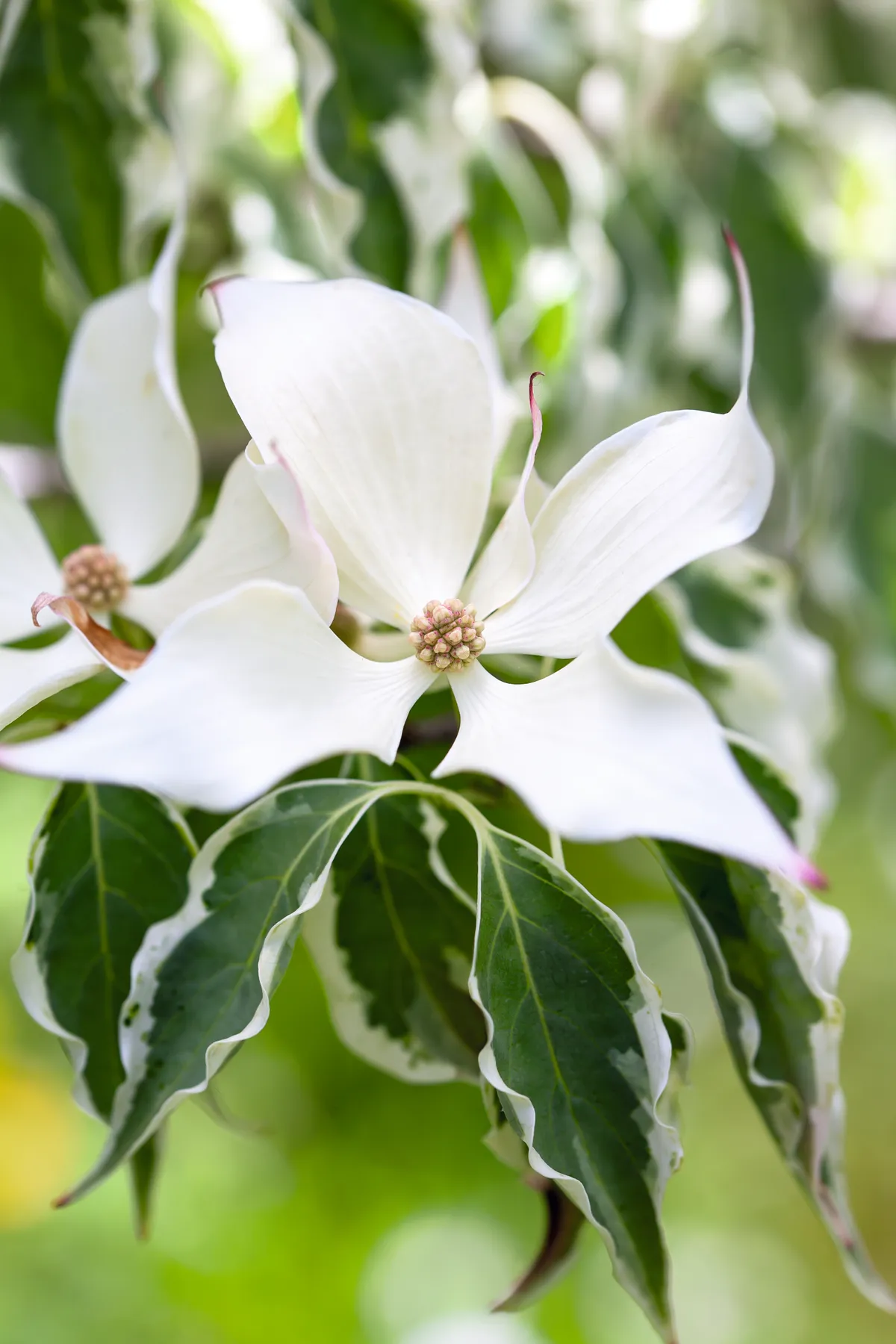
Pretty, variegated dogwood shrub with pointed, grey-green leaves margined with white; starry, white blooms in early summer. Best grown in semi-shade on moist, well-drained, acid soil.
Height 3m. Hardiness rating RHS H5, USDA 5a-8b.
Cornus kousa var. chinensis
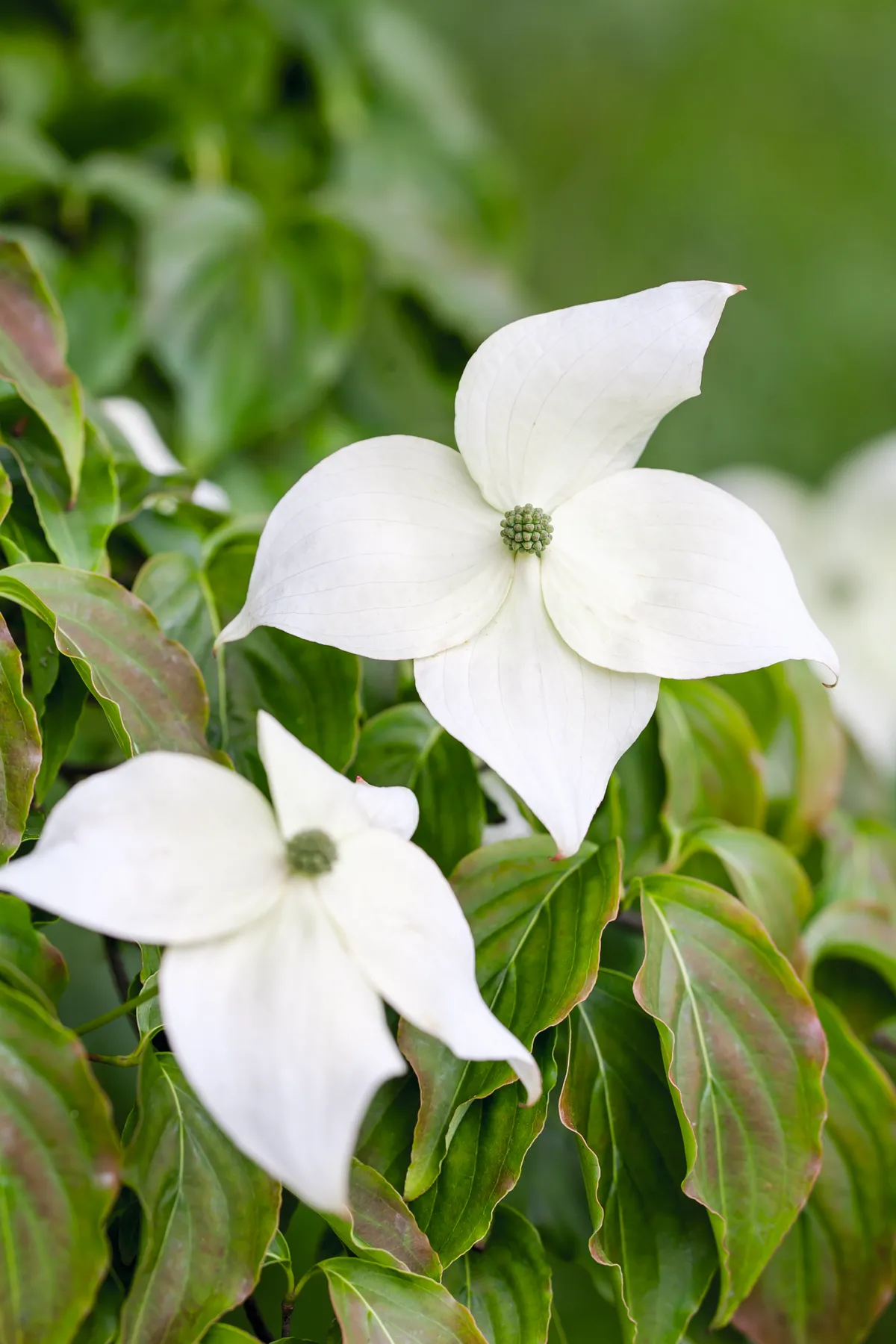
A popular and easy to grow dogwood. Thrives on most soils, including heavy clay. Robust and free flowering with the bonus of good autumn colour and crimson fruits that follow creamy flowers.
Height 5m. Hardiness rating RHS H5, USDA 5a-8b.
CORNUS: IN BRIEF
What Known as dogwoods or cornels, there are around 60 species of Cornus, ranging from low, creeping, sub shrubs to large trees. Many have given rise to valuable garden ornamentals grown for flowers, foliage or winter stems.
Origins North America, Europe and Asia. They are mostly hardy, woody plants from cool, temperate regions.
Season Flowering dogwoods bloom from late spring to midsummer. Those grown for foliage are deciduous, but are beautiful in leaf from spring to autumn. Cornus grown for stem colour are great in winter.
Size From 5 x 30cm (Cornus canadensis) to 8 x 6m (Cornus controversa ‘Variegata’, although most grow to around 3-5m.
Conditions Most well-drained, reasonably moist, fertile soils. The flowering dogwoods favour acid to neutral conditions.
Cornus kousa ‘John Slocock’
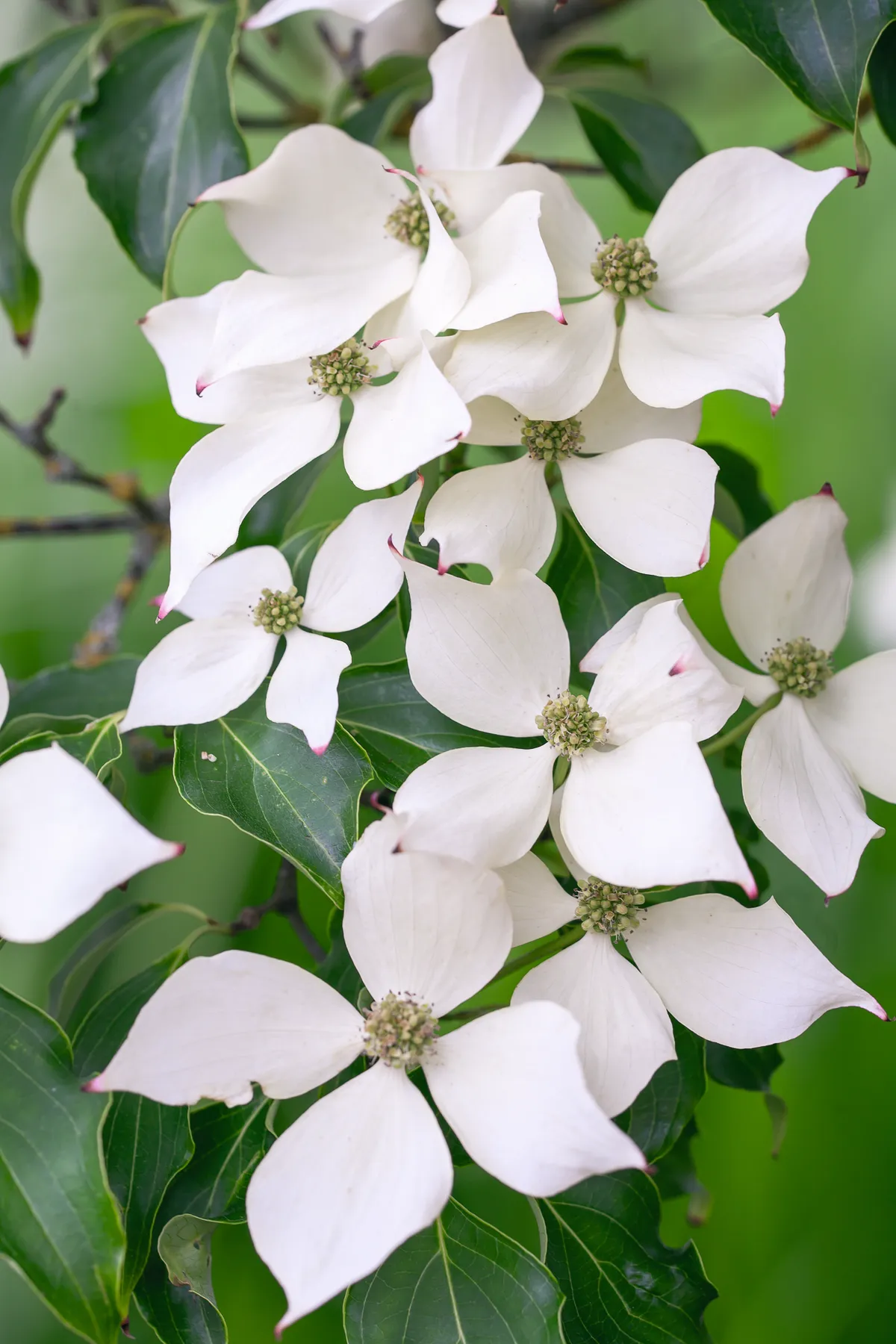
A bushy dogwood plant; upright, then spreading in character. The creamy-white bracts become blotched with pink as they age and are followed by deep-pink fruits. Outstanding.
Height 4m. Hardiness rating RHS H5, USDA 5a-8b.
Cornus kousa var. chinensis ‘China Girl’

Abundant, creamy-white bracts that do not blush pink as they fade. The bracts start small, star-like and green, and stand on short stalks along the branches. This dogwood is upright in habit.
Height 4m. Hardiness rating RHS H5, USDA 5a-8b.
Cornus kousa 'Miss Satomi'
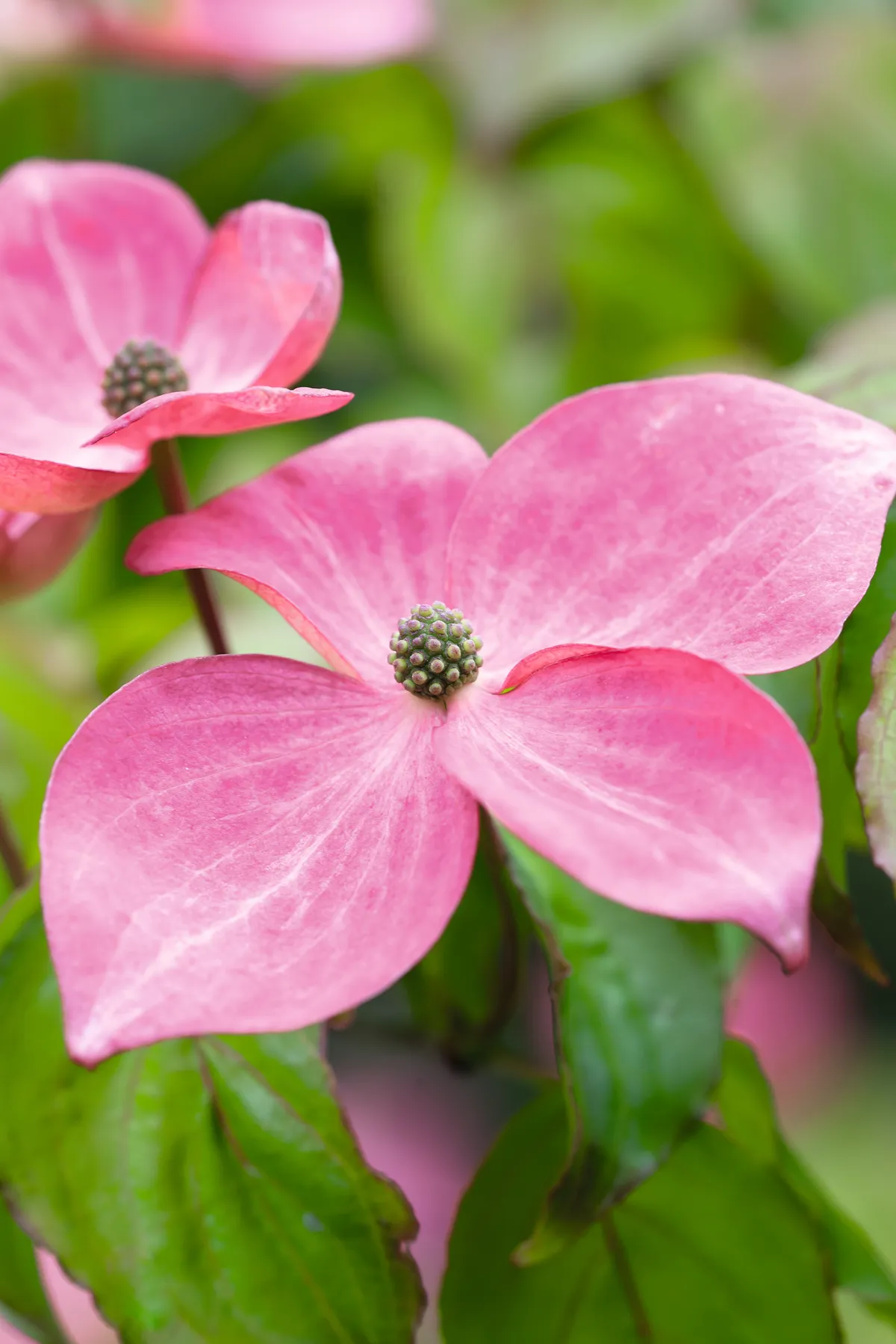
Elegant dogwood plant with a broad, spreading habit. Large, pink bracts, poised along branches in early summer, become more intense in colour as they age. Orange-red autumn foliage.
Height 3m. Hardiness rating RHS H5, USDA 5a-8b.
Cornus kousa 'Madame Butterfly'
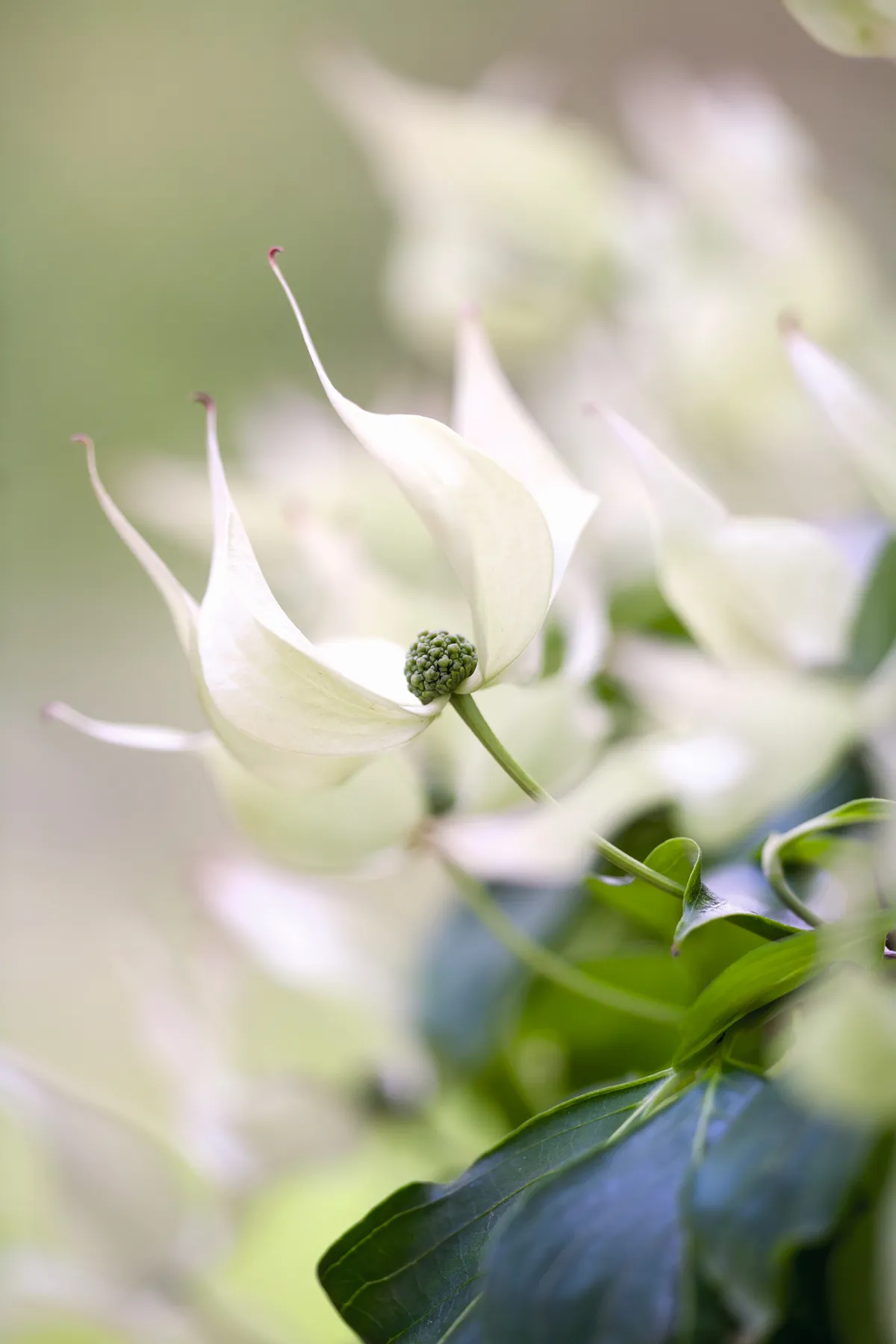
North American dogwoods
Cornus florida f. rubra
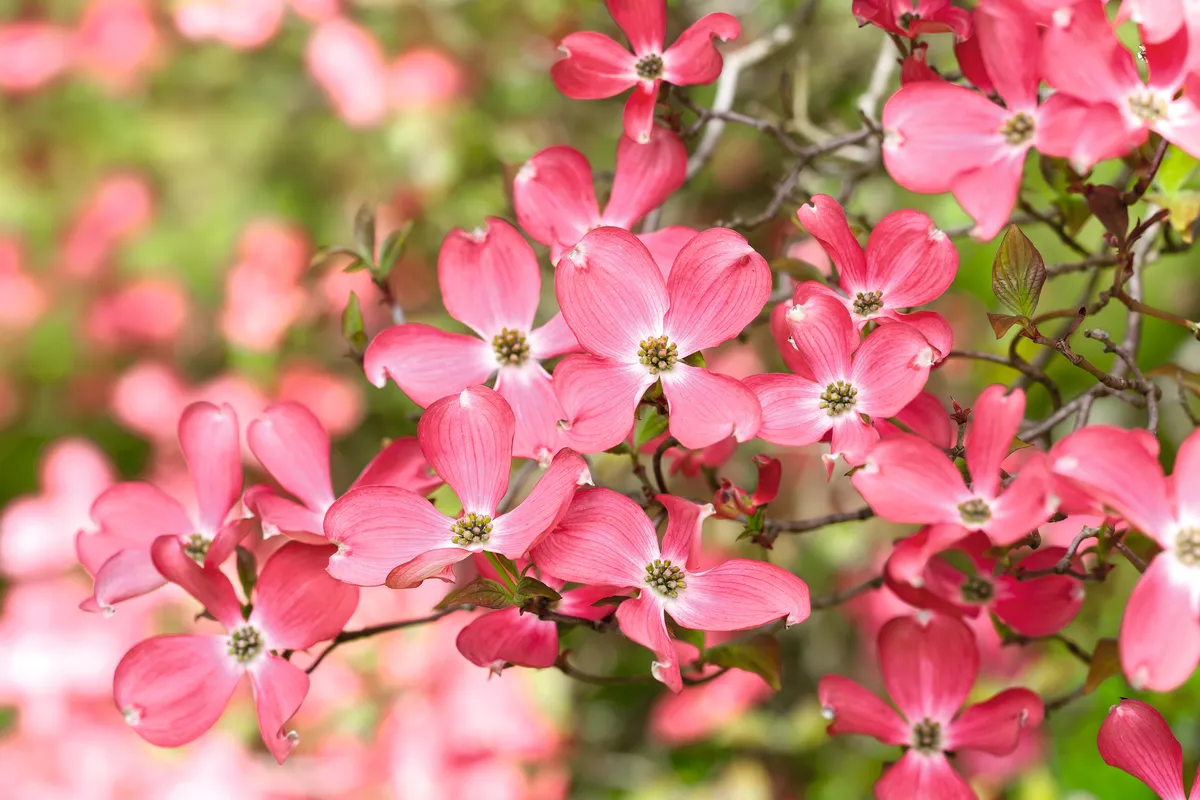
A wonderful display of blooms in late spring and rich autumn tints make this a fine specimen dogwood tree for a small garden. Prefers deep, fertile soil; unhappy on shallow chalk.
Height 5m. Hardiness rating RHS H5, USDA 5a-9b.
Cornus florida 'Cherokee Chief'
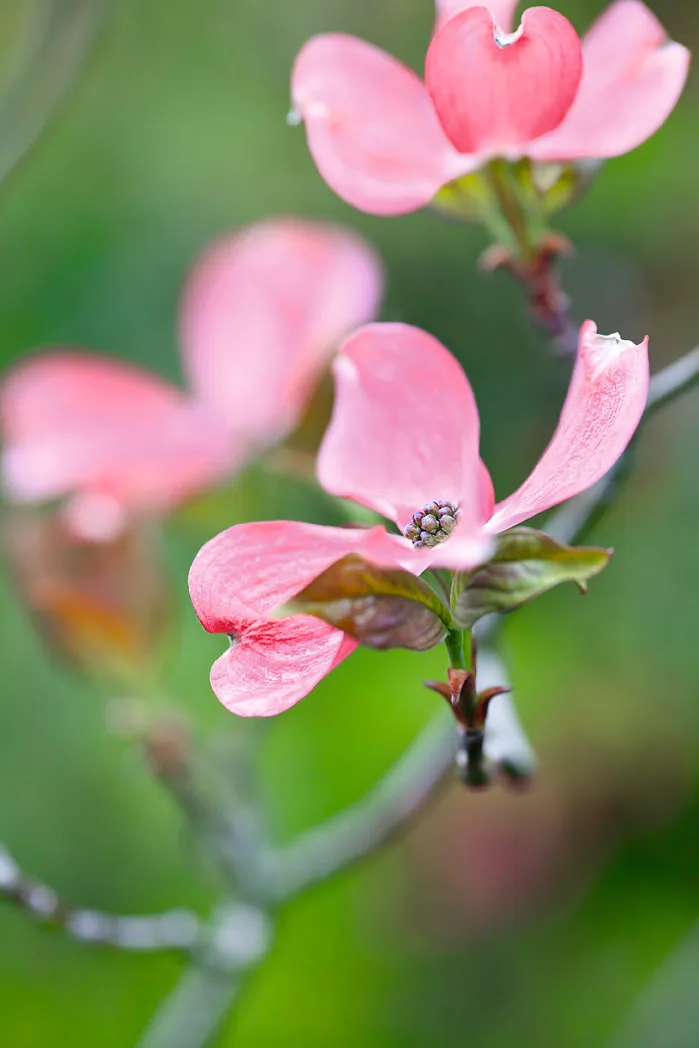
An improved form of flowering dogwood with abundant blooms on wonderfully sculptural branches in late spring. Lovely autumn foliage. Prefers rich, fertile soil; unhappy on shallow chalk.
Height 5m. Hardiness rating RHS H5, USDA 5a-9b.
Cornus florida 'Rainbow'
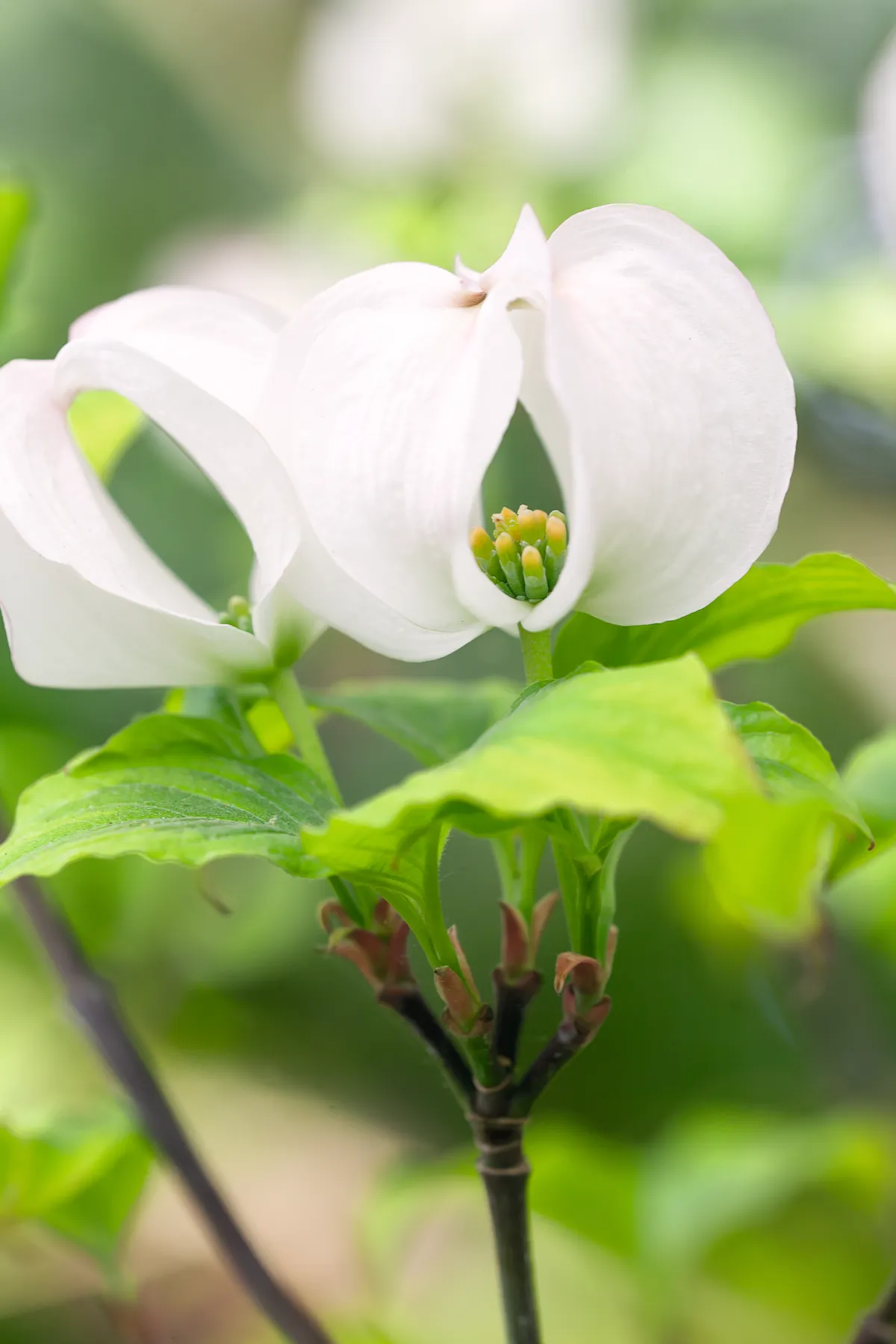
Rich, gold-margined leaves turn purple-red edged with scarlet in autumn. Large, white blooms resemble wontons as they open at the tips of the shoots. A compact and upright dogwood.
Height 3m. Hardiness rating RHS H5, USDA 5a-9b.
Cornus canadensis
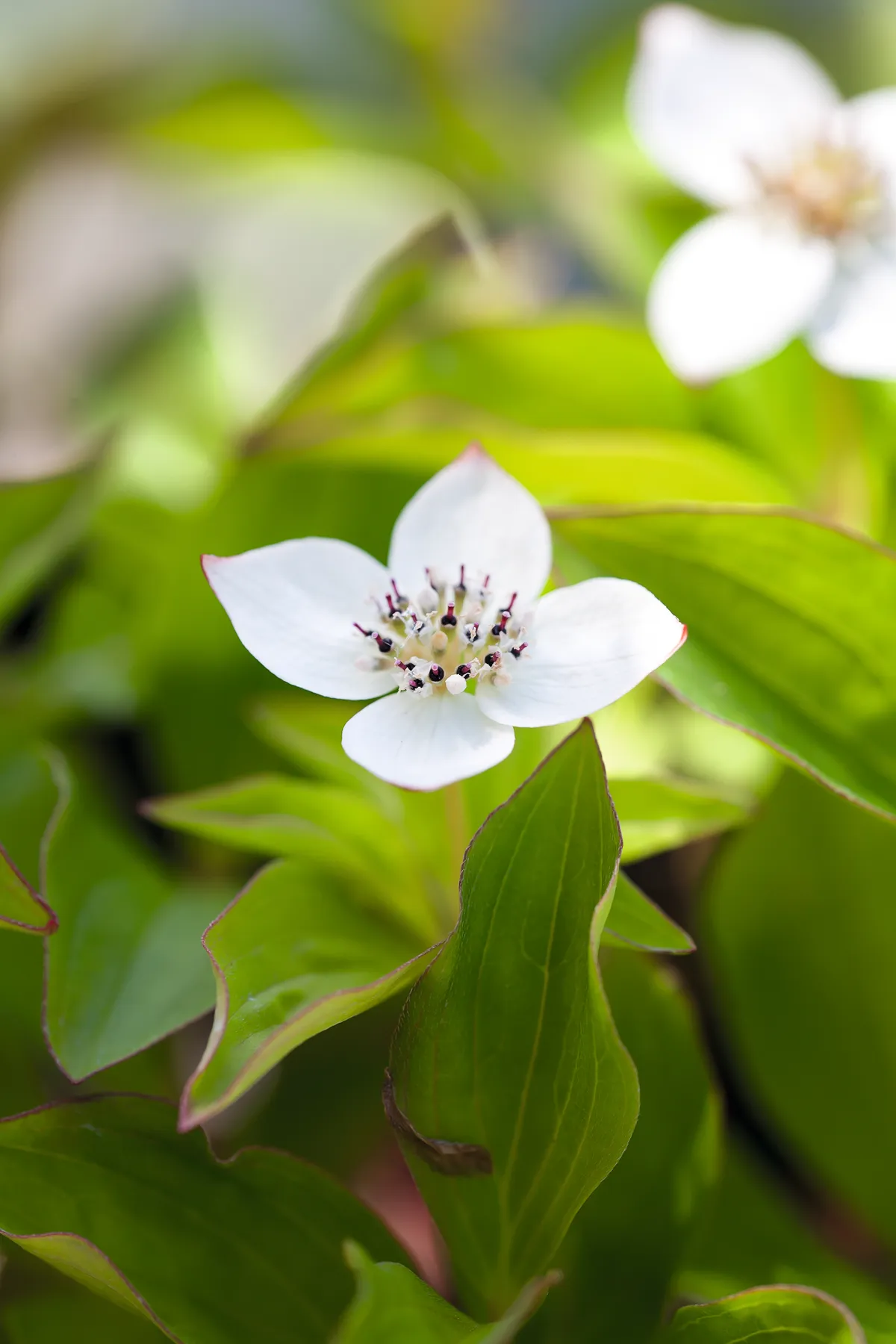
The tiny, creeping dogwood forms mats of short, upright stems and dark-green leaves studded with small, white starry blooms. Clusters of red berries follow in autumn.
Height 10cm. Hardiness RHS H7, USDA 2a-7b.
Cornus florida 'Cherokee Sunset'
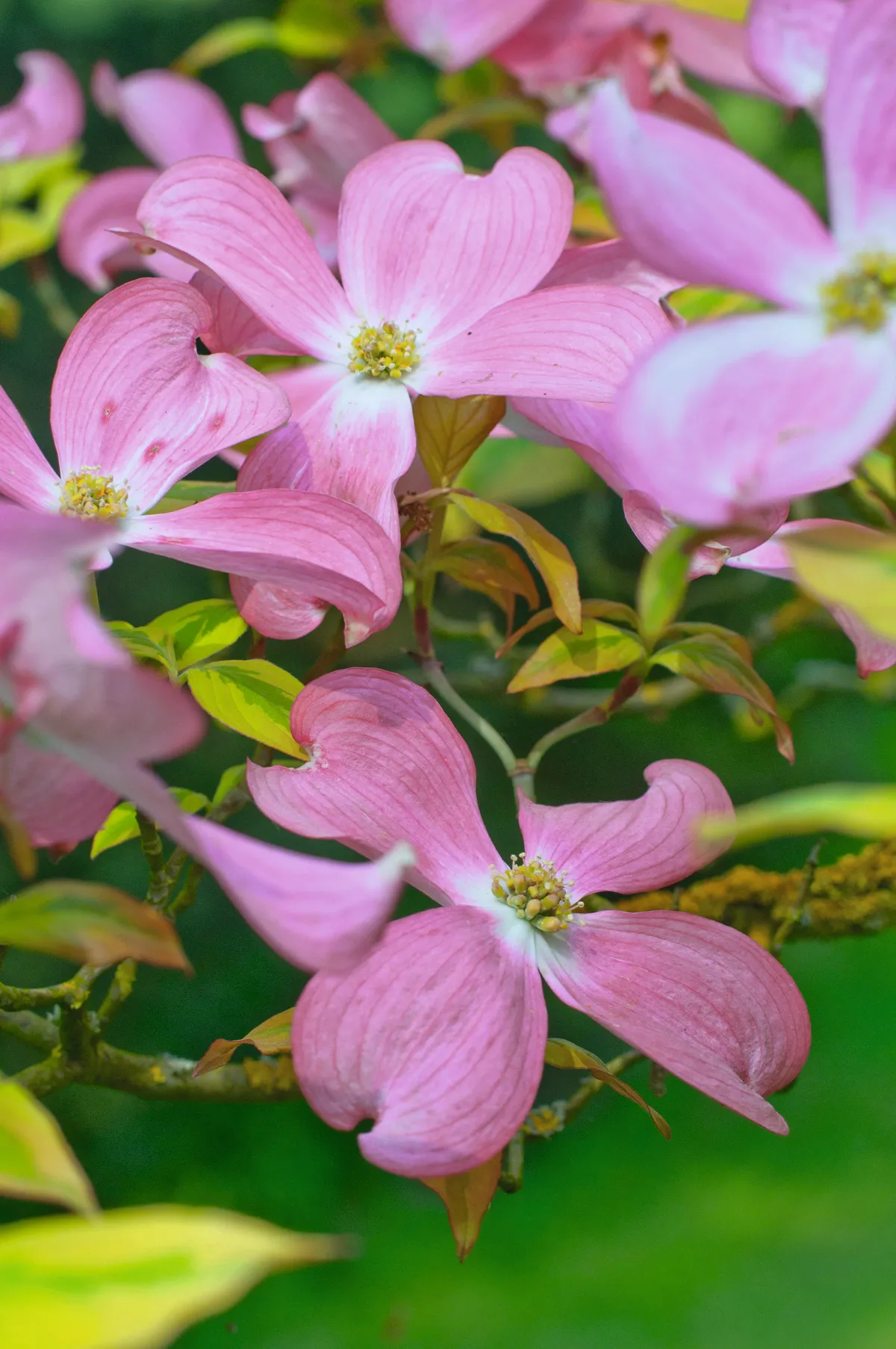
Mature dogwood leaves are mostly gold, splashed green in the centres, turning red, purple and pink in autumn. Large, deep-pink flowers in late spring are striking against the leaves.
Height 3m. Hardiness RHS H5, USDA 5a-9b.
Hybrid dogwoods
Cornus x rutgersensis 'Celestial'
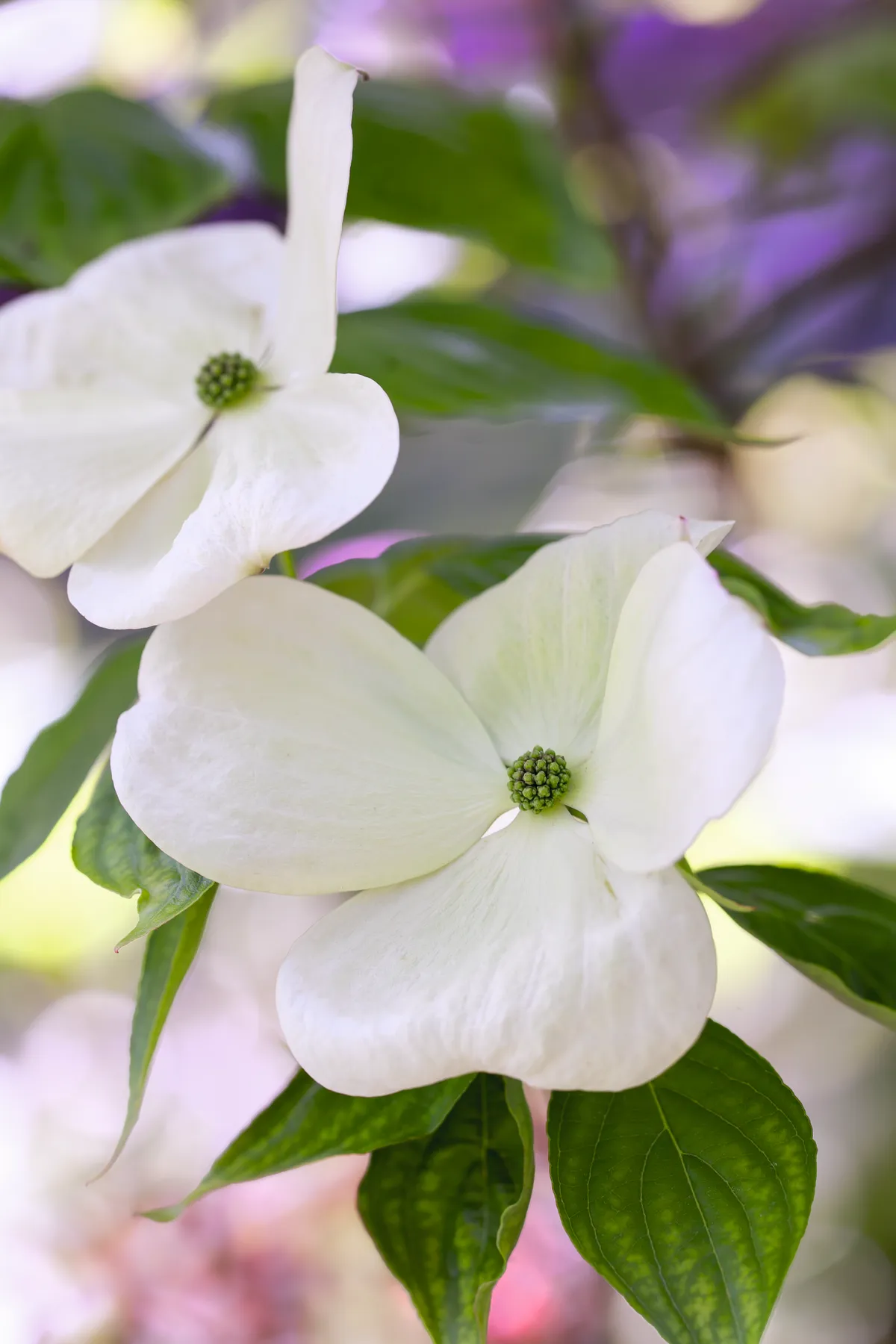
A vigorous new dogwood cultivar, bred for disease resistance. Domed, greenish-white bracts in early summer and good autumn leaf colour. Upright and narrow in habit on moist, well-drained, acid soil.
Height 5m. Hardiness rating RHS H5, USDA 5a-8b.
Cornus ‘Eddie’s White Wonder’
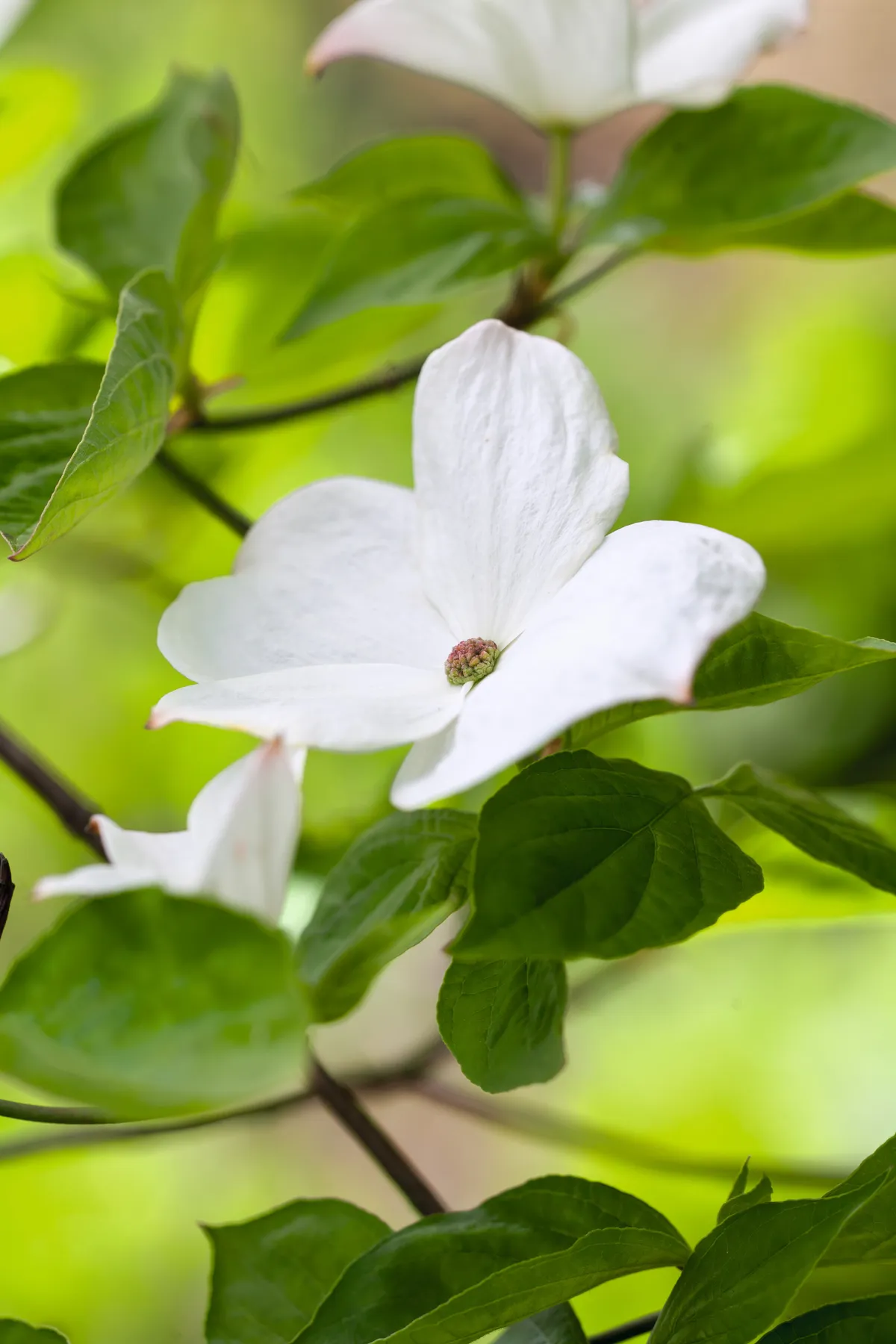
This dogwood has large, rounded, creamy-white blooms appear in early spring, and are spectacular after a good summer the previous year. Crimson-pink autumn colour. Upright and narrow in habit.
Height 4m. Hardiness rating RHS H5, USDA 5a-9b.
Cornus aurora (= ‘Rutban’)
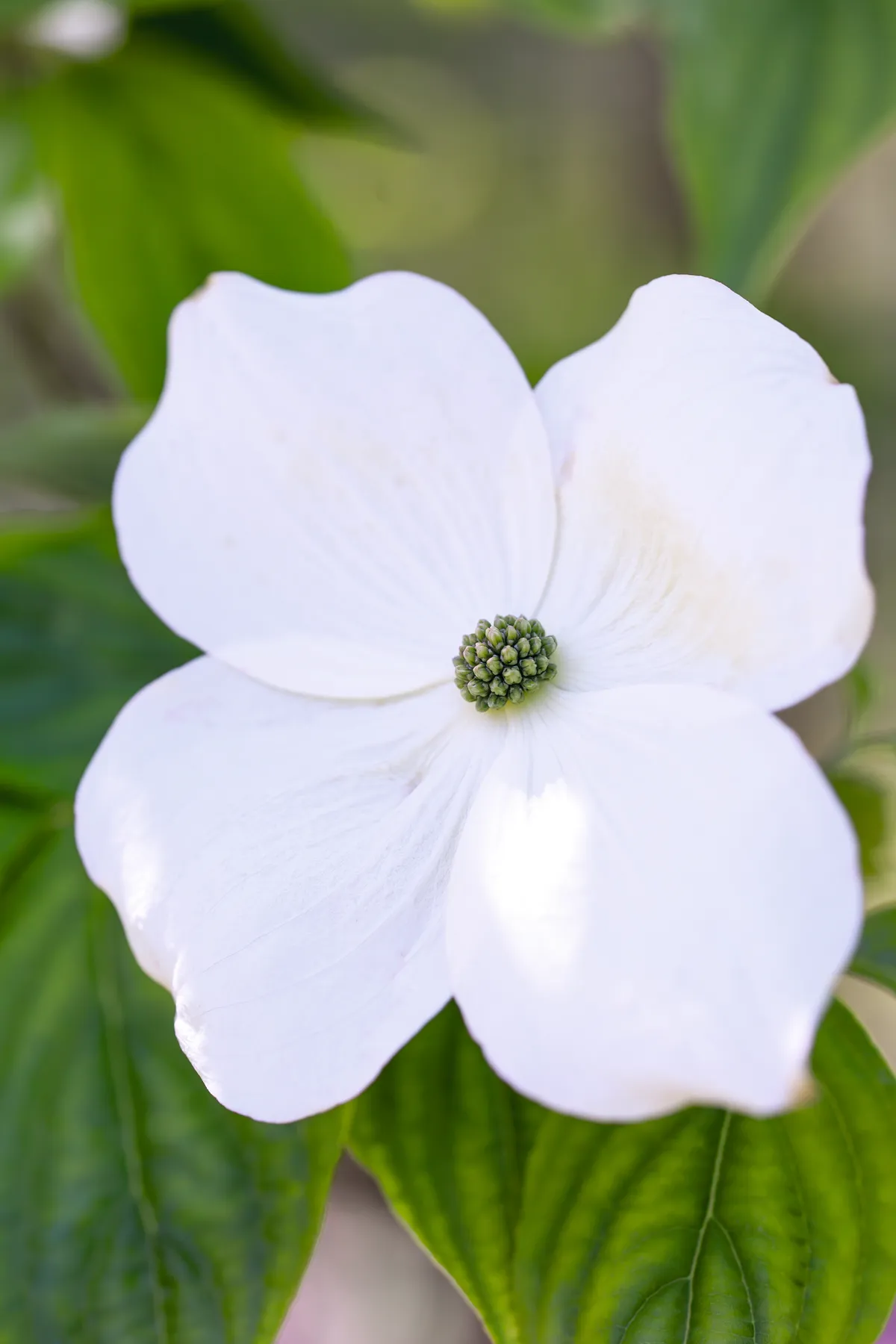
A robust, upright, hybrid dogwood with dark-green foliage and long-lasting autumn colour. Wonderful display of white bracts in an open, sunny position; no fruit. A good small, specimen tree.
Height 5m. Hardiness rating RHS H5, USDA 5a-8b.
Cornus x elwinortonii 'Venus' (= ‘Kn30 8’)
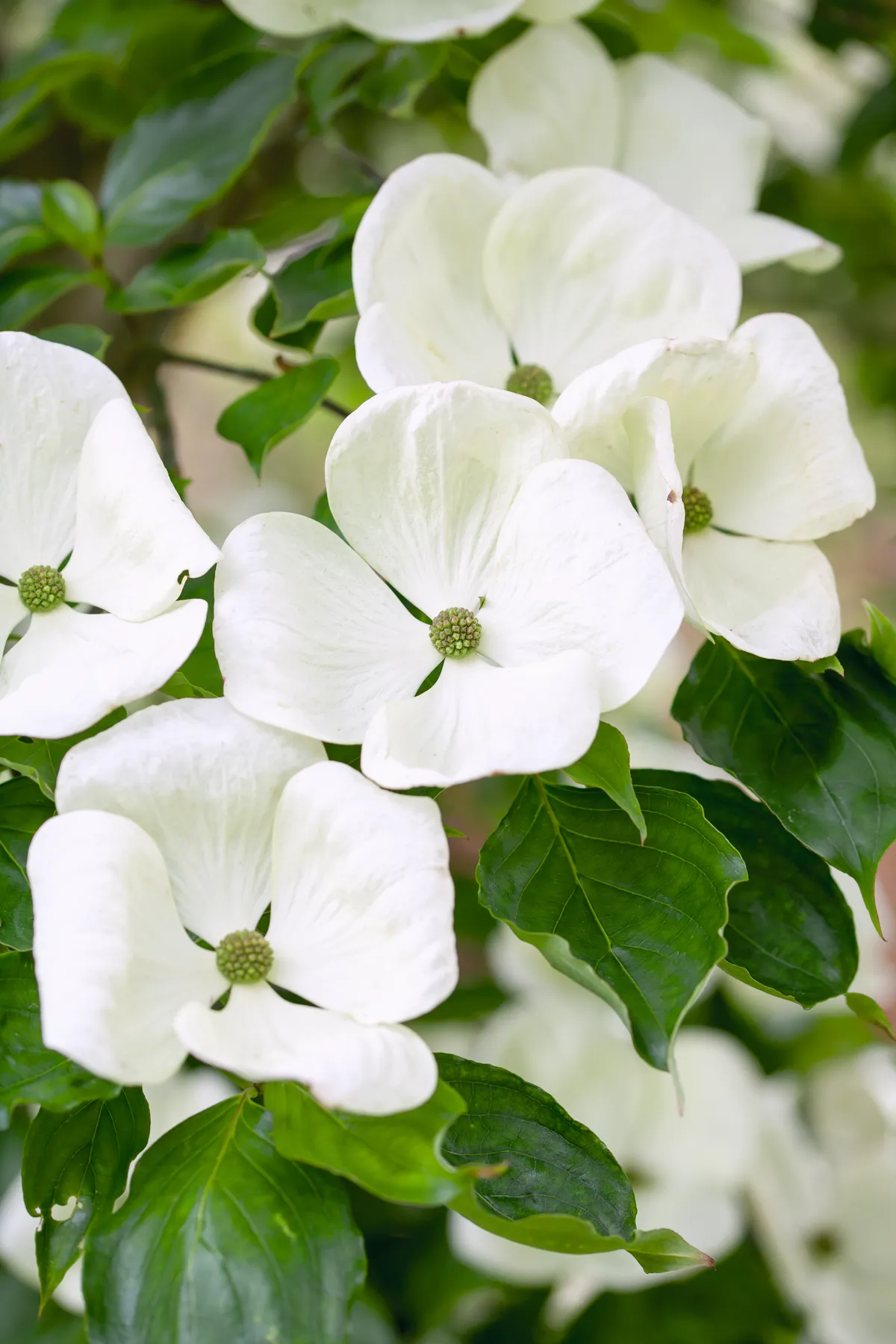
A recent introduction with exceptionally large, creamy-white bracts. Dark-green foliage and vibrant autumn colour. This dogwood is best in a sheltered situation to avoid damage to flowers.
Height 4m. Hardiness rating RHS H5, USDA 5a-8b.
Cornus ‘Porlock’
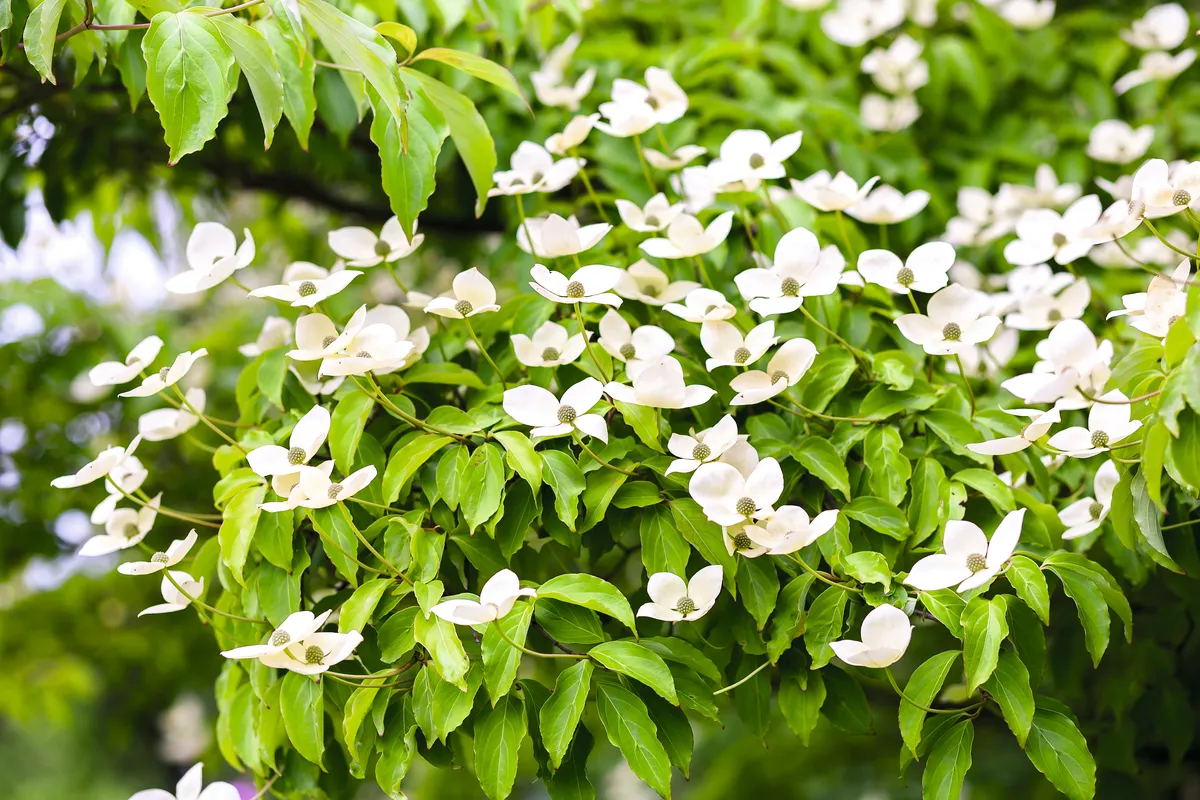
Flowering from an early age, this large, spreading cultivar produces abundant creamy bracts that colour pink as they age, and are followed by luxuriant strawberry-like fruits in autumn. Easy to grow, this dogwood is tolerant of most soils, apart from shallow chalk.
Height 5m. Hardiness rating RHS H5, USDA 5a-9b.
Elegantly pointed bracts curve inwards at first as the blooms sit butterfly-like along the branches; they blush pink as they age. Rich autumn tints and lychee-like fruits appear on this dogwood in autumn.
Height 4m. Hardiness rating RHS H5, USDA 5a-8b.
Where to see flowering dogwood
- The Sir Harold Hillier Gardens, Hampshire (Cornus national collection holder)
- Newby Hall, North Yorkshire (Cornus national collection holder)
- The Savill Garden, Berkshire (Many fine, mature dogwood specimens)
Here's more on pruning dogwoods